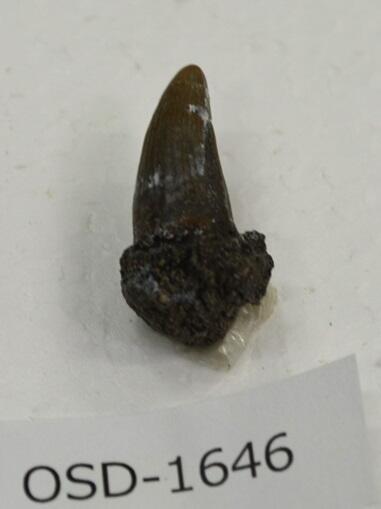A research group led by Professor Ren Hirayama of the Faculty of International Research and Education and Assistant Professor Tai Kubo of the Center for Data Science at Waseda University, together with Associate Professor Mugino Kubo of the Graduate School of Frontier Sciences at the University of Tokyo, in collaboration with the Kuji Amber Museum (Kuji City, Iwate Prefecture; Director Hisao Shinden), has announced, on July 11 at Waseda University's Waseda Campus (Totsukamachi, Shinjuku City, Tokyo Prefecture), that they discovered crocodilian fossils from the Upper Cretaceous (approximately 90 million years ago) Tamagawa Formation of the Kuji Group and successfully deduced what the crocodilians preyed on. The morphology of the bone fossils indicated that the discovered crocodilians belong to the family Paralligatoridae, which is closely related to the modern crocodiles. The three-dimensional analysis of microscopic wear (microwear) remaining on the teeth revealed that they may have fed on organisms with skeletons harder than those of fish. The results showed that the Japanese crocodilians evolved into their modern form during the Cretaceous period and are expected to contribute to the clarification of dinosaur-era biota in Japan.

From left to right: the dental microwear on the fossilized teeth of the Kuji Crocodile, and that of the teeth of living crocodiles that were fed sardines, quails, rat, and crayfish. It can be observed that the teeth of the Kuji Crocodile have numerous scratches.
Provided by Associate Professor Mugino Kubo of the University of Tokyo.
Since 2012, Hirayama, in collaboration with the Kuji Amber Museum, has been conducting annual intensive surveys of the Tamagawa Formation of the Kuji Group, which was deposited approximately 90 million years ago during the late Cretaceous period at an excavation site adjacent to the museum. By leading a multi-university research team, Hirayama has discovered and analyzed more than 3,000 fossils of over 30 species of vertebrates, including turtles, crocodilians, sauropods (large plant-eating dinosaurs), theropods (carnivorous dinosaurs), choristoderes, and sharks, as well as plant fossils.
In this study led by Assistant Professor Kubo, the morphological analysis of several crocodilian fossils found in the aforementioned Formation revealed that the crocodilians of this Formation (Kuji crocodilians) belong to the extinct family Paralligatoridae, which is closely related to the common ancestor of extant crocodilians (eusuchians). For example, the vertebrae of Kuji crocodilians retained primitive morphological features, whereas four or more rows of dorsal armor plates (osteoderms) were observed as evolutionary morphological characteristics. Based on these characteristics, Kuji crocodilians were classified through a phylogenetic analysis. Furthermore, based on the size of the vertebrae constituting the backbone, the total length of Kuji crocodilians was estimated to be about 3 meters.
The Cretaceous period was the time when the ancestors of eusuchians appeared. Since Japan was a coastal part of the continent then, the findings indicate that paralligatorids lived near the sea. Previously, paralligatorids had been found in Central Asia and other inland areas. Moreover, Associate Professor Kubo and her team analyzed the feeding habits of Kuji crocodilians based on the microscopic wear (microwear) left on the teeth of the animals as they ate their food. The analysis revealed that Kuji crocodilians likely fed on quadrupeds with bones harder and sturdier bones than those of fish, such as terrestrial dinosaurs and turtles, which have been found in large numbers in the same Formation (no large mammals had yet appeared in the Cretaceous period).
Microwear is known to be distinguishable from scratches caused by water flow. Confocal laser microscopy was used to acquire high-resolution 3D images of 36 fossil teeth of Kuji crocodilians and quantitatively evaluate the shape and depth of surface wear. The results were compared to wear on the teeth of modern wild lizards and crocodiles, of which feeding habits are clearly known, and the teeth of American alligators artificially fed only on specific types of food (such as crayfish, mice, quails, and sardines). Previously, the research group led by Associate Professor Kubo, in collaboration with Clemson University in the United States, reported experimental data showing that the microwear and feeding habits of animals correspond to each other.

Provided by Waseda University
Associate Professor Kubo said, "This study was conducted with new analytical samples obtained through continuous excavation with the full support of Kuji City and the Kuji Amber Museum. We analyzed these samples using new analytical methods and clarified the ecosystem of Japan 90 million years ago where dinosaurs and crocodiles lived. Moving forward, we hope to obtain new samples through continuous excavation and report interesting research results."
This article has been translated by JST with permission from The Science News Ltd. (https://sci-news.co.jp/). Unauthorized reproduction of the article and photographs is prohibited.




